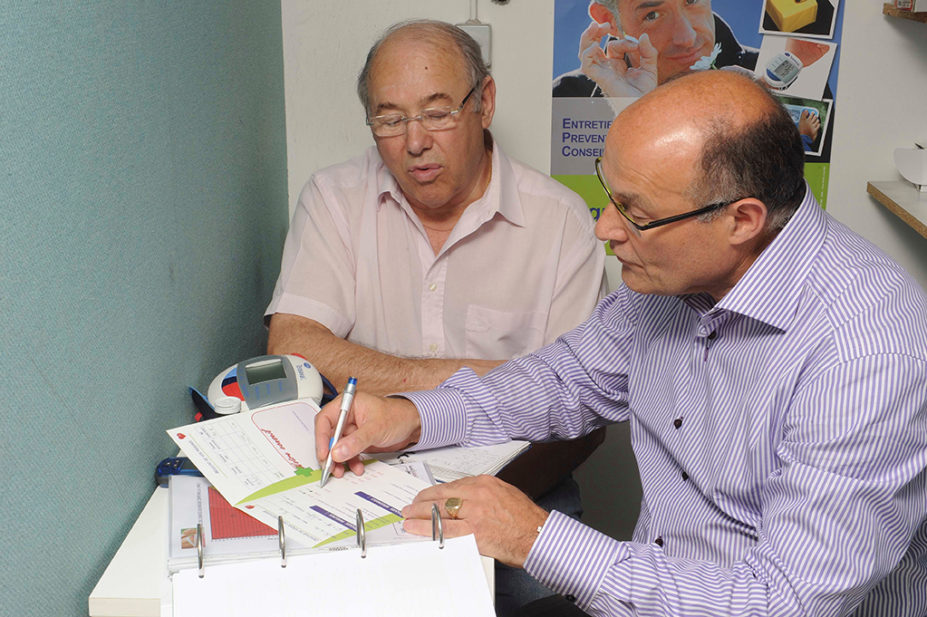
BSIP SA / Alamy Stock Photo
Community pharmacies across England are experiencing a wide variation in the number of patients referred to them by NHS trusts through the ‘discharge medicines service‘ (DMS), NHS data have revealed.
The figures, published monthly by NHS Business Services Authority (NHSBSA) and analysed by The Pharmaceutical Journal, show that community pharmacies have claimed for 63,109 referrals within the first nine months of the service being launched in February 2021.
However, more than a quarter (28%) of these referrals were sent from NHS trusts in the Cheshire and Merseyside Sustainability and Transformation Partnership (STP) area, where pharmacies have made payment claims to NHSBSA for 17,849 referrals.
Meanwhile, pharmacies in Birmingham and Solihull STP are recorded as having claimed for just 12 referrals from NHS trusts since the service began.
The DMS launched nationally as an essential pharmacy service on 15 February 2021, following delays owing to the COVID-19 pandemic.
As part of the service, NHS trusts refer patients to community pharmacy after hospital discharge. Pharmacy staff can then compare the medicines prescribed by the hospital with those taken before admission to ensure any medicines awaiting collection are still appropriate.
The service builds on the ‘transfer of care around medicines’ (TCAM) scheme — a similar service that had been running in parts of the country since 2014 — which has since been replaced by the DMS.
David Dean, chief officer of Pharmacy Thames Valley, which represents 258 community pharmacy contractors in Berkshire and Oxfordshire on all NHS matters relating to community pharmacy, said his local pharmaceutical committee (LPC) includes pharmacies in both Frimley Health and Care STP, where pharmacies claimed for 60 referrals, and Bucks, Oxfordshire and Berkshire West STP, where 393 referrals were claimed.
“The trusts in Frimley didn’t have an existing TCAM system in place and don’t have an existing IT platform,” he said. “So, they have gone live, albeit only using the manual NHS mail system for referral and because it’s so cumbersome and manual, the level of referrals isn’t as high as we would like.”
This contrasts with the Royal Berkshire NHS Foundation Trust, where the LPC first “started talking to them two and a half years [ago] about TCAM and that morphed into DMS and they went live in March [2021],” Dean continued.
“The service itself is fantastic,” he said. “But we’re just not reaching the numbers that we’d need to make it a worthwhile financially viable service for community pharmacy.”
Dean described the DMS as “a postcode lottery”, with pharmacies in the south east of England receiving “very small numbers of DMS [referrals] as an average, whereas in other parts of the country they’ve had a TCAM system running quite nicely, and they’ve just morphed into DMS and they’re doing hundreds of referrals per month”.
Commenting on the service in Cheshire and Wirral STP, Adam Irvine, chief executive officer of Community Pharmacy Cheshire and Wirral, said the local hospitals implemented TCAM “several years ago”.
“Once that was in place, it was a relatively easy switch over to DMS — most of the trusts already meet the full toolkit specification for the DMS and those that didn’t were able to put a plan in place to get there with relatively minor tweaks,” he said.
Alastair Buxton, director of NHS services at the Pharmaceutical Services Negotiating Committee, said the roll out of the service “was always going to be gradual due to the need for local referral pathways to be put in place first”.
“NHS England is putting in place various pieces of support for the rollout of nationally commissioned services such as the DMS, including new posts to support regional and ICS [integrated care system] level pharmacy integration.
“They have also just announced a target for engagement with the service in the 2022/2023 Commissioning for Quality and Innovation (CQUIN) framework for hospitals; this is a welcome development which we expect will result in greater engagement by hospitals.”
From 1 April 2022, NHS England is incentivising hospital trusts to refer 1.5% of patients through the DMS “within 48 hours following discharge” during 2022/2023 as part of its CQUIN framework, which makes a proportion of NHS trust income conditional on demonstrating quality improvements.
Gareth Jones, director of corporate affairs at the National Pharmacy Association, said the new incentives “should provide a boost to this valuable service which reduces re-admissions and improves safety”.
Read more: Building vital connections between hospital and home
How does the ‘discharge medicine service’ work?
Once the referral is received, pharmacies are paid £12 to check the referral and compare the medicines the patient has been discharged with to those that were taken before admission, ensuring that medicines awaiting collection are still appropriate.
Contractors are then paid £11 to check the first prescription received post discharge, taking account of the changes made while the patient was in the hospital.
A further payment of £12 is made once the pharmacist or pharmacy technician carries out a consultation to check that the patient understands their new medicines regimen.
NHS England said on 12 January 2022 that patients “who receive this service are less likely to be readmitted (5.8% versus 16% at 30 days), and spend fewer days in hospital (7.2 days on average compared to 13.1 for patients who did not receive the service) where they are readmitted”.
This follows an earlier analysis of referral data by NHS England, which suggested that the discharge medicines service could have helped avoid 17,238 hospital bed days in three months.


